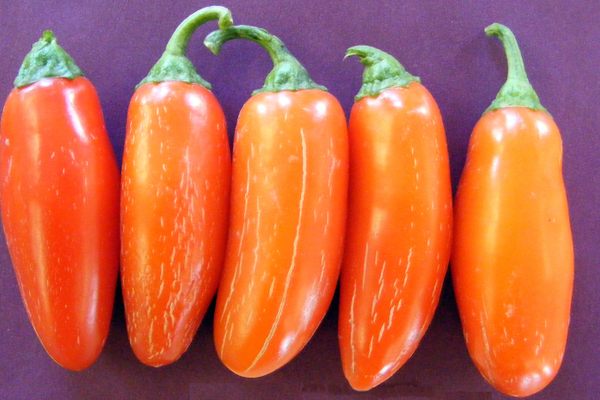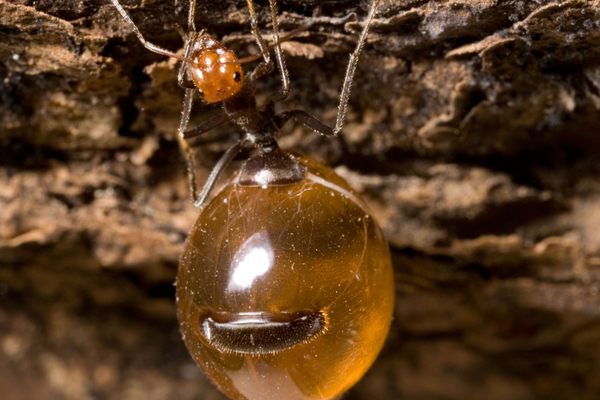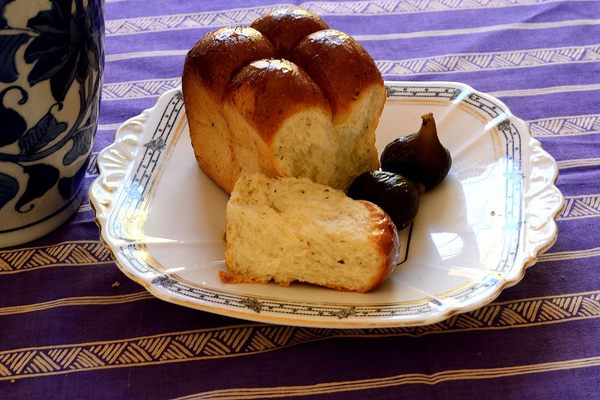Prepared Foods
Pueblo Bread
Baked in traditional adobe hornos, this bread is a staple of the American Southwest's Native Pueblo people.
The shapes of pueblo bread are as diverse as the 19 different New Mexican Native Pueblo tribes: bulbous flowers with crisp golden-brown crust, thick oblong slabs that puff in the oven, knobbed loaves from the Laguna Pueblos known as “elephant toes.” Yet each loaf shares the same basic ingredients and process: Wheat flour, butter or lard, water, and a pinch of salt are kneaded and left to rise all night, then baked in squat outdoor adobe ovens. A staple across the Pueblo cultures of the Southwestern United States, pueblo bread kneads together community, Native heritage, and a complex colonial history.
While a quintessential and beloved food item for many Native peoples across the Southwest, pueblo bread’s history reflects the Euro-American settler colonialism in this region. Prior to European colonization, Pueblo bakers did not use wheat flour, instead using coarse meals of corn, nuts, or beans. The Spanish introduced both wheat and the squat adobe horno (oven) to the area. Similar to other colonially-influenced Native foods such as fry bread, this legacy can render some Native people’s relationships to pueblo bread affectionate yet complex. Yet the hornos themselves reveal an even more layered colonial history: The Moors actually originally brought them to Spain during their several-century rule of the Iberian peninsula, forging a distant culinary link between North Africa and New Mexico.
While some lament the decline in traditional oven use, for many Pueblo bakers, firing up the horno to make massive batches of bread for family, feasts, or the market remains a living tradition. Bakers bank their horno fires with cedar. The wood burns slow and fragrant, and bakers adjust the cedar ashes to regulate the temperature to give their loaves the perfect crisp. To test if the oven is ready, they scatter oats into the hot horno. If these oats burn, bakers can remove ashes to cool the oven; if they brown, the oven is ready. Experienced bakers don’t need a timer, but know by feel and smell when the bread is done. Fresh from the oven, the loaves’ warm, spongy insides make a perfect accompaniment to a bowl of savory chile pozole or a thick bean stew.
Where to Try It
-
This Native-owned restaurant specializes in traditional Pueblo and New Mexican dishes.
-
Pueblo Harvest Cafe Website
2401 12th St NW, Albuquerque, New Mexico, 87104, United StatesLocated intside the Pueblo Cultural Center, this cafe features freshly baked pueblo bread every day. Each batch is handmade by a baker nicknamed "Mama T," who learned the art from her grandparents. In addition to classic Pueblo bread, they also sell tomato, spinach, green chile, and cheddar versions.
Written By
 Reina Gattuso
Reina Gattuso
Sources
- www.gourmet.com.s3-website-us-east-1.amazonaws.com/food/2008/05/hornos.html
- www.apeaceofbread.com/adobeartisans
- books.google.com/books?id=XiBnknkkDZcC&printsec=frontcover&dq=%22horno%22+moors+spain&hl=en&sa=X&ved=0ahUKEwi_k_mAzdzhAhUmheAKHZdxAFAQ6AEIQzAF#v=onepage&q=%22horno%22%20&f=false
- www.eater.com/2019/1/23/18183970/zuni-bread-pueblos-new-mexico
- www.indianpueblo.org/pueblo-bread-fresh-from-the-oven/





















